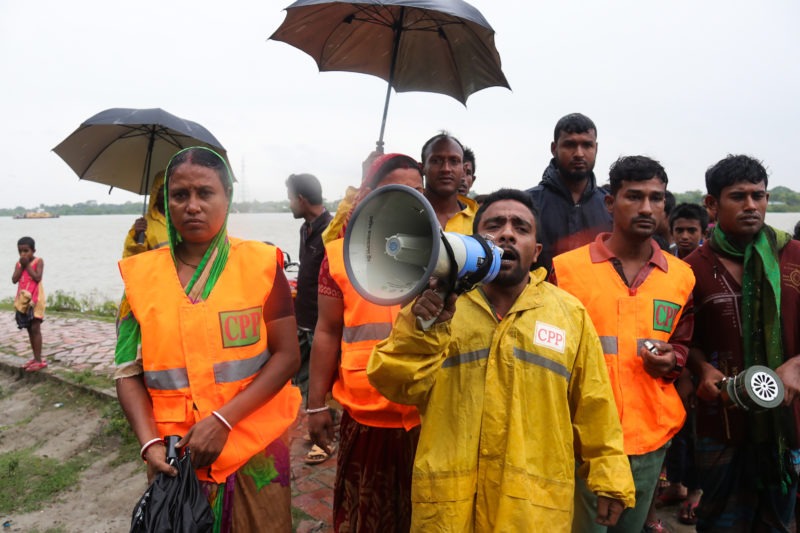Bangladesh, India move hundreds of thousands away from Cyclone Bulbul
Authorities in Khulna alerted residents to the dangers of the approaching cyclone (STR)
MOUSOUNI ISLAND (India) (AFP) – Bangladeshi and Indian authorities on Saturday ordered more than 450,000 people to flee coastal villages and islands as Cyclone Bulbul headed for the Bay of Bengal coast.
The eye of the storm, packing winds of up to 120 kilometres (75 miles) per hour, was expected to hit land around the Bangladesh-India frontier late Saturday.
A storm surge up to two metres (seven feet) high was predicted along the coast, Bangladesh’s Meteorological Department said.
Bangladesh troops were sent to villages to help with the evacuation. About 55,000 volunteers were also going door-to-door to warn residents.
Minister for disaster management Enamur Rahman told AFP the evacuation of 400,000 people would be completed by Saturday evening.
“We’ve already evacuated some 391,000 people,” he said.
About 1,500 tourists were stranded on the southern island of Saint Martin after boat services were suspended due to bad weather.
Bangladesh’s two biggest ports, Mongla and Chittagong, were closed because of the storm and flights into Chittagong airport have also been halted.
India also ordered an alert on its side of the border and the West Bengal government evacuated nearly 60,000 people in the state, officials said.
On the island of Mousouni, which lies in the path of the storm, scared residents took shelter in schools and government buildings because they had not been able to escape.
All flights at in and out of Kolkata airport were suspended for 12 hours and military planes and ships have been put on standby, Indian authorities said.
Winds of up to 110kph and heavy rainfall from the fringe of Bulbul have already lashed Odisha state, uprooting trees that blocked many roads.
Bulbul was expected to hit the coast at the Sundarbans, the world’s largest mangrove forest, which straddles Bangladesh and part of eastern India and is home to endangered species including the Bengal tiger.
Bangladesh’s low-lying coast, home to 30 million people, is regularly battered by cyclones that leave a trail of destruction.
Hundreds of thousands of people have been killed in cyclones in recent decades.
While the frequency and intensity have increased, partly due to climate change, the death tolls have come down because of faster evacuations and the building of 4,000 cyclone shelters along the coast.
In November 2007, Cyclone Sidr killed more than 3,000 people. In May this year, Fani became the most powerful storm to hit the country in five years, but the death toll was about 12.
Disclaimer: Validity of the above story is for 7 Days from original date of publishing. Source: AFP.


